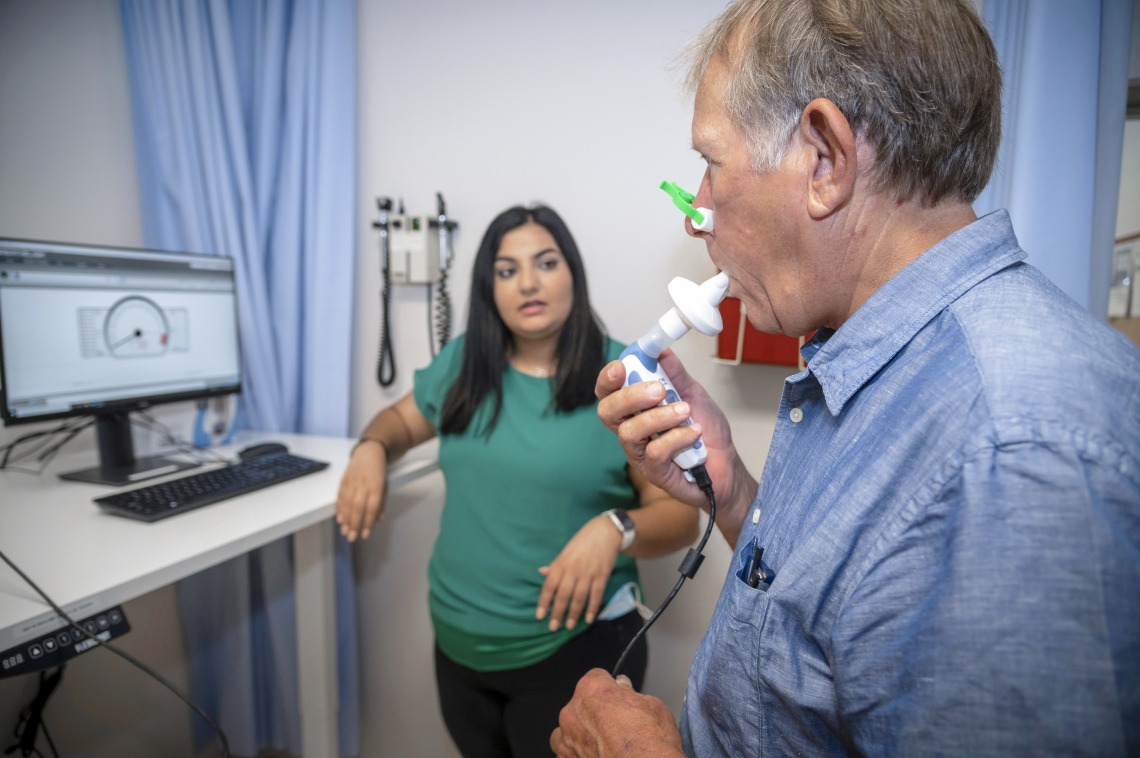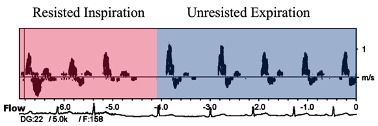The physiology of inspiratory resistance training

Inspiratory resistance training (IRT) is a highly abbreviated resisted breathing exercise that yields substantial reductions in blood pressure, secondary to the repeated generation of large negative intrathoracic pressures. Fiona Bailey, Ph.D., and her team have been exploring the effects of regular IRT performance on blood pressure, arterial function, and sympathetic activity for several years. Recently, Dallin Tavoian, Ph.D., an

American Heart Association Postdoctoral Fellow in the Bailey Laboratory, has been investigating the mechanisms of action that lead to these long-term changes by characterizing blood flow during IRT. During traditional forms of exercise (30-45 minutes in duration), blood flow increases ~2-4-fold over resting levels, resulting in increased anterograde frictional forces applied to vascular endothelial cells and which result in short-term increases in the flow mediated dilatation. Using ultrasound doppler imaging, Dr. Tavoian has recorded blood flow patterns in the brachial artery in healthy men and women during and immediately after a single IRT session. Unlike traditional exercise, IRT does not substantially increase anterograde blood flow. Instead, IRT related intrathoracic pressure swings appear to “draw blood back” toward the heart, generating retrograde frictional forces. Despite IRT providing an “opposite” stimulus, it yields similar benefits for cardiovascular health and with a far lower time commitment. Specifically, endothelial cell function shows short-term improvement in dilatation (by ~22%) which persists for up to 10 minutes following each 5-minute IRT session. On this basis, we propose that IRT-related intermittent retrograde frictional forces contribute to a sustained improvement in vascular endothelial function.


